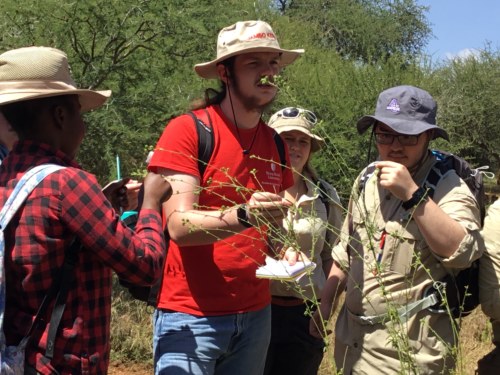
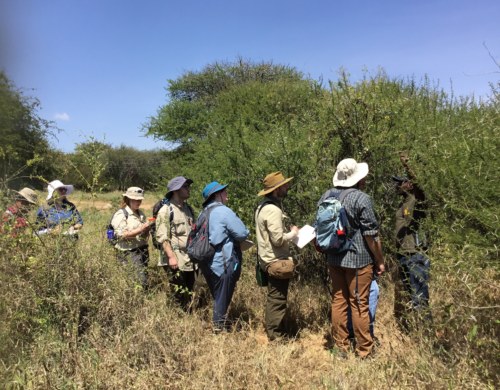
The first week of the semester kicked off with the ecology module at Mpala Research Center (MRC). The biomes at the center are diverse and provide the students with a good “living laboratory” to understand the ecosystem of the region. MRC boasts great wildlife such as elephants and hippos, the endangered Grevy’s zebra, common zebra, and reticulated giraffes ( only found in northern Kenya).
To understand the vegetation cover within Mpala, Kimani Ndung’u, a botanist and researcher at Mpala, took the students out in the compound to identify grasses, shrubs, and trees. In an ecosystem, different plants respond and adapt differently to various environmental stresses such as drought and herbivory. Some plants adapt to drought by having thin leaves, thick cuticle, or even a reversed photosynthetic pathway to prevent water loss. On the other hand, plants may have thorns or secrete toxins to protect themselves from herbivores.
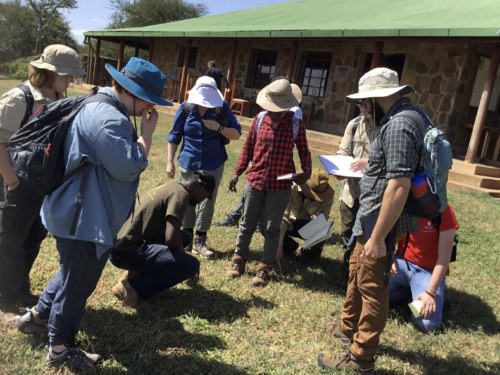
Kimani showing the students some of the grasses at Mpala.
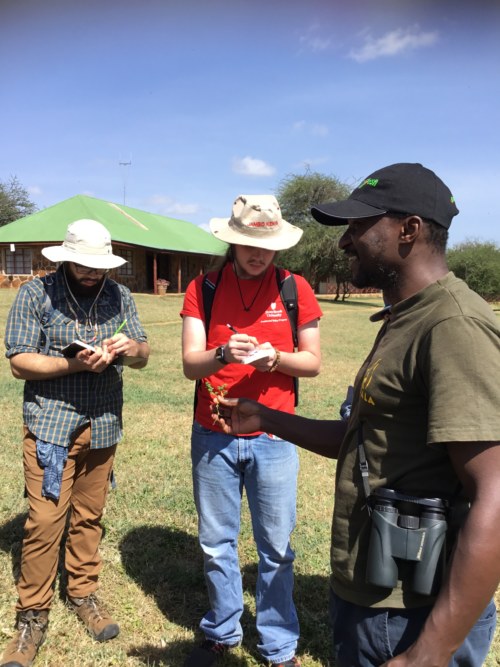
Effective note taking is crucial for any researcher!
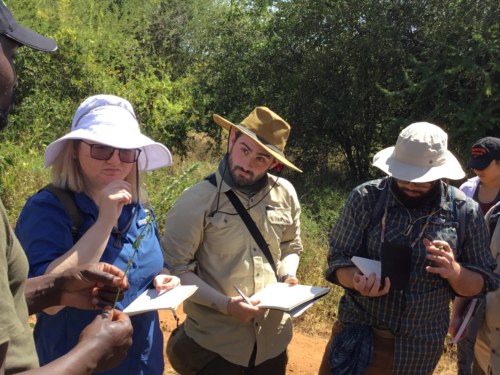
Kimani giving a lecture on a mint-like plant species.
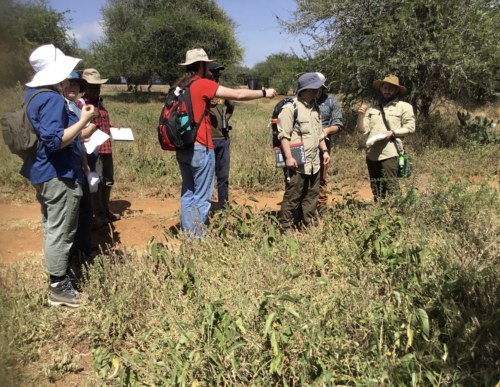
Zak did not like the Plectranthus smell!
In the ecological world, data collection is crucial in identifying natural plant communities, vegetation mapping, and also preserving integrity of the research. After learning various data collection methods, the students set out to the field and conducted their experiments using transects and quadrats to examine grasses and forbs within and outside the fenced Ewaso Nyiro River Camp.

Joe laying the tape measure for the transects.
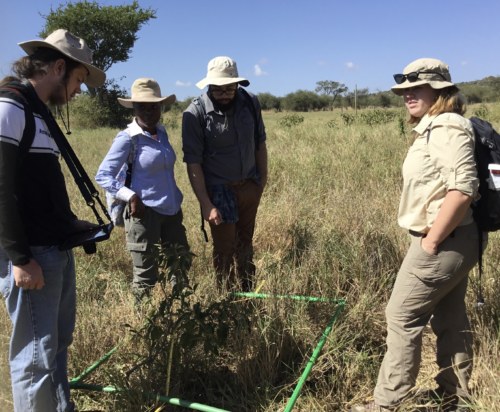
Michael, Clara, Joe, and Becca discussing the plants in their quadrat.
Later in the afternoon, the students visited the camel boma with the Ranch Manager, David Hewett, to learn about livestock management and the various challenges affecting this, specifically the camels which play part in shaping the ecosystem.
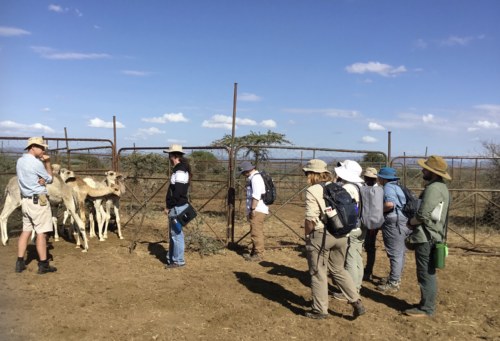
Students at the camels boma with David Hewett.
By mid-week, the students were well acquainted with much of the vegetation at Mpala. The lead professor of the ecology course and director of MRC, Dr. Dino Martins, introduced the students to an interesting aspect of ecology called mutualism. Students went out in the field to collect data on ant-plant mutualism. Ants benefit from the Acacia drepanolobium plant by getting carbohydrates and shelter, and in turn defend the tree from herbivores. The following day was spent at the Kenya Long-term Exclosure Experiment (KLEE) plots with Dr. Duncan Kimuyu. KLEE has been in existence for about 25 years, and it aims at understanding landscape management as influenced by wildlife and livestock.
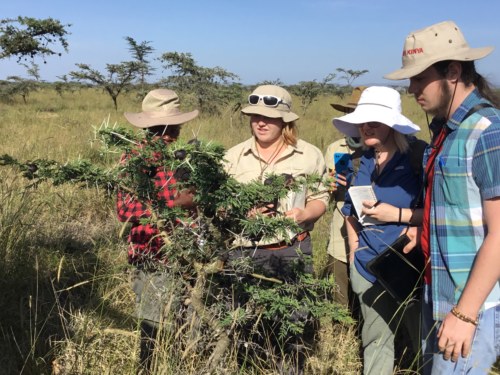
Students examining an Acacia drepanolobium tree.
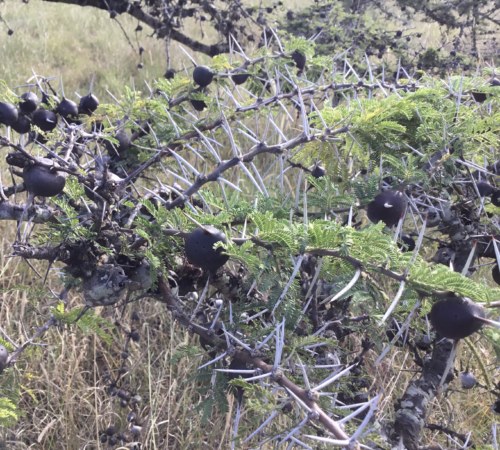
Acacia drepanolobium is an iconic tree in the African Savanna. The swollen spine pods provide shelter for the ants.
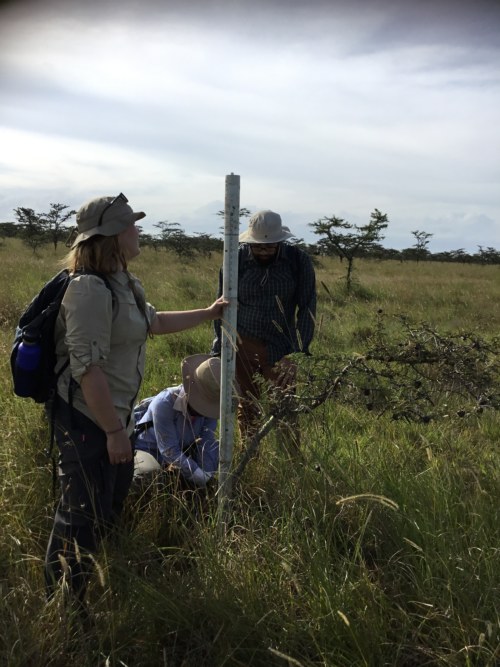
Becca, Clara, and Joe collecting height and crown data from the acacia tree.
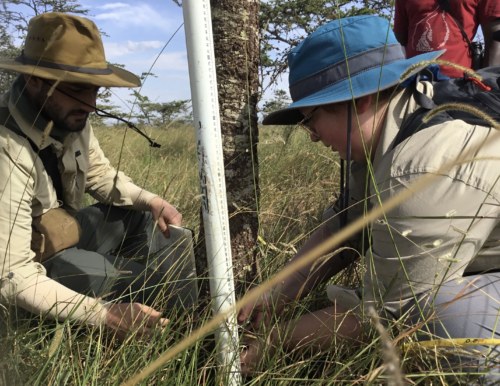
Zak and Emma measuring the diameter of the acacia.
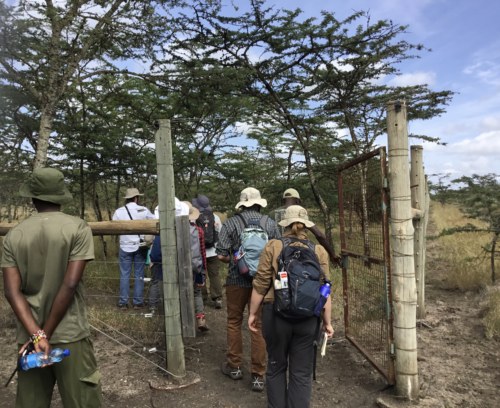
Students making their way into one of the KLEE plots.
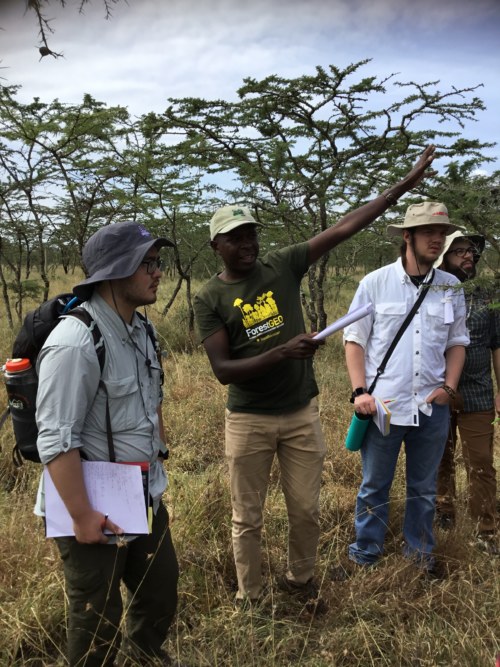
Dr. Kimuyu giving a lecture on landscape management.
The students visited the camels boma on Friday morning with Dr. Maureen Kamau, a Smithsonian Veterinarian Research Fellow, where they learned about “One Health.” One Health is concept encompassing human, wildlife and livestock health. 75% of emerging and infectious diseases affecting human beings are zoonoses (transmitted to humans from animals), and understanding the structure and pathway of disease transmission enables us to curb many of these sicknesses. Later in the evening, Dr. Martins led the students for a walk down by the Ewaso Nyiro River, where they learned more about the different environmental factors influencing vector-borne diseases in the region.
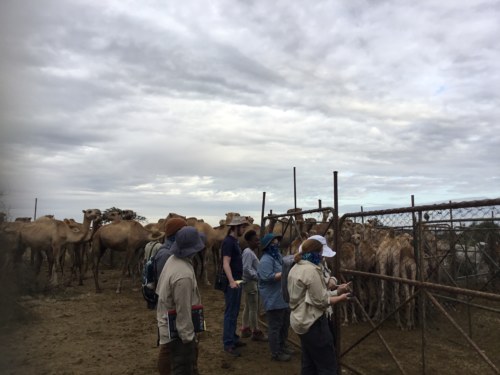
Students at the camel boma.
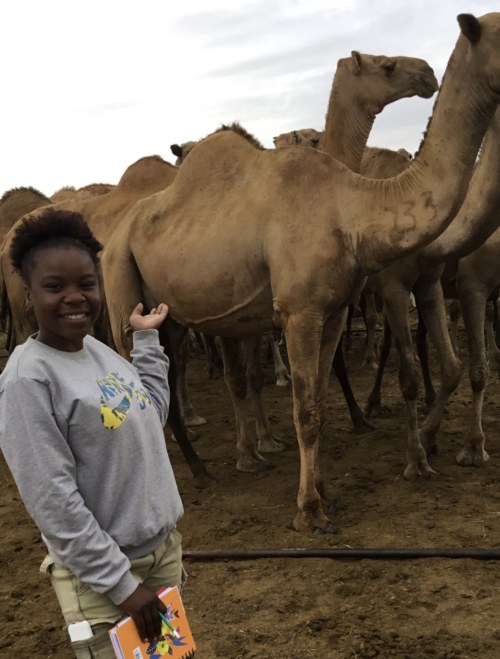
Clara loved the camels!
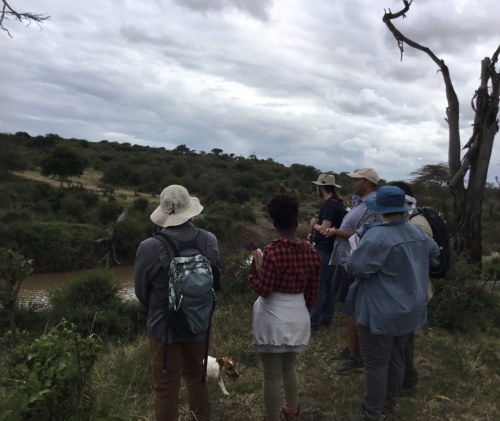
Students at the banks of Ewaso Nyiro River.
Photo credit: T.A
Stay tuned for more updates on the Great Grevy’s Rally up this weekend!





